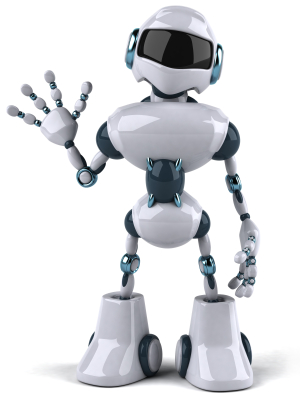Can They Build a Robot You’ll Trust?
 From the Boston Globe, read about Nexi the Robot, in an article suggesting the robot may “furnish a lesson in human trust.” Partly yes; and partly no.
From the Boston Globe, read about Nexi the Robot, in an article suggesting the robot may “furnish a lesson in human trust.” Partly yes; and partly no.
I find two things interesting about it. First, 21 of the first 22 comments on the article are strongly negative. Second, the gist of what the scientists are finding accords very well with commonsense.
Here’s Nexi’s experiment:
By controlling how 4-foot-tall Nexi interacts with people, scientists have a new and powerful way to study the signals that allow people to trust one another, or not, within minutes of meeting.
“There should be some signal for trustworthiness that’s subtle and hard to find, but [it is] there,’’ said David DeSteno, a psychologist at Northeastern University and one leader of the experiment.
Nexi offers advantages over using a human participant because people give off subtle gestures, or engage in unintentional mimicry, that can be hard to measure or control, and probably influence whether someone trusts them. Nexi has many of the expressive abilities of a person, but researchers can tightly control every aspect of her behavior — allowing them to test what nonverbal cues might make her seem more or less trustworthy…
…so far, researchers believe that perceiving trust is not merely a matter of one person projecting a shifty eye or some other untrustworthy vibe; instead it is a complicated interaction in which people may unconsciously mimic one another, and through their own motions learn something about the other person’s internal motivations.
Trust is About Relationship
It may sound trivially obvious, but trust is inherently about relationship. The way we establish trust is by interacting–and seeing how it feels. The mimicry referred to above is science-talk for whether we ‘get’ each other.
Repeating a phrase, a gesture; it’s what shrinks do too, when they continually ask, “So, does that make you feel ___?”
Some of you may recall an old computer game called Eliza; programmed in Basic or Fortran, it would announce itself to you as a therapist. It would solicit your input, then spit it back to you with a prefix phrase like, “So, how do you feel when you CHR$YourInputHere$.” (For a typical Eliza session, click here). Basically, the program just repeats your phrases back to you; yet it gives us the feeling of being listened to.
Over at the NYTimes, another robot story; this one about Paro, a robot modeled after a baby harp seal:
It trills and paddles when petted, blinks when the lights go up, opens its eyes at loud noises and yelps when handled roughly or held upside down. Two microprocessors under its artificial white fur adjust its behavior based on information from dozens of hidden sensors that monitor sound, light, temperature and touch. It perks up at the sound of its name, praise and, over time, the words it hears frequently.
It’s been successfully used as therapeutic for patients with dementia. It appears to work. No surprise there: it responds. Mimicry again—finding ourselves to be the cause of a reaction by another is essentially affirming. It means we matter.
What’s Not Amazing About Robot Stories
I find there are two tones struck in most articles about this sort of subject. One is the idea that we have gotten “closer to explaining” some core element of humanity. The other is it’s somehow amazing to discover “how things really work.” As one economist in the Nexi study says, “What’s interesting to me is how mechanical the process of interacting with another being turns out to be.’’
Please. There’s nothing mysterious about it.
Trust is about becoming related. So are friendship, sex, and politics. We can describe virtually any human activity in physical-chemical terms (see for example the oxytocin-trust effect); but that doesn’t imbue it with meaning, or ‘explain’ it, any more than saying adrenaline drove World War II.
So, people respond to robot baby seals or blue-eyed blinking machines. How is that different from children playing with dolls, men finding some mannequins attractive, people finding panda bears more attractive than snakes, finding one automated GPS voice more friendly than another, or forming very strong bonds with pets? Why do we give cars names, why do we anthropomorphize mice on TV, why was it a snake that Eve spoke to? Because they mimicked engagement with us. And we responded.
Can our feelings be manipulated by machines? Sure; it’s why Thomas the Tank Engine has a smile on his ‘face.’ And if a locomotive can cause us to smile, is it any wonder that a Bernie Madoff can cause us to part with our money?
Not really; our mechanics are quite simple. Knowing the “how” doesn’t take anything away from the mysterious “why” that will always be at the heart of wonder.

why they make robot for?